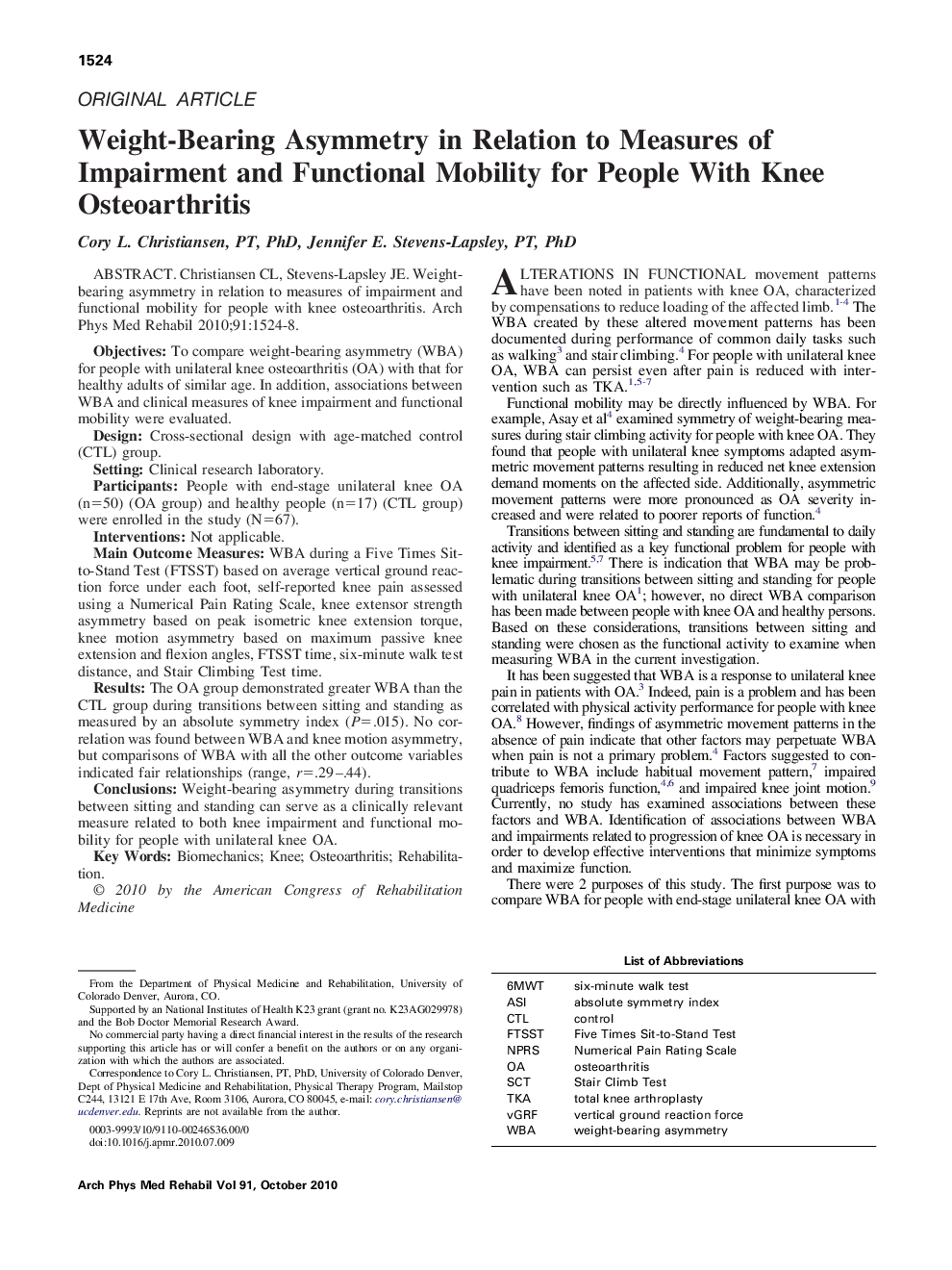| کد مقاله | کد نشریه | سال انتشار | مقاله انگلیسی | نسخه تمام متن |
|---|---|---|---|---|
| 3450942 | 1595747 | 2010 | 5 صفحه PDF | دانلود رایگان |

Christiansen CL, Stevens-Lapsley JE. Weight-bearing asymmetry in relation to measures of impairment and functional mobility for people with knee osteoarthritis.ObjectivesTo compare weight-bearing asymmetry (WBA) for people with unilateral knee osteoarthritis (OA) with that for healthy adults of similar age. In addition, associations between WBA and clinical measures of knee impairment and functional mobility were evaluated.DesignCross-sectional design with age-matched control (CTL) group.SettingClinical research laboratory.ParticipantsPeople with end-stage unilateral knee OA (n=50) (OA group) and healthy people (n=17) (CTL group) were enrolled in the study (N=67).InterventionsNot applicable.Main Outcome MeasuresWBA during a Five Times Sit-to-Stand Test (FTSST) based on average vertical ground reaction force under each foot, self-reported knee pain assessed using a Numerical Pain Rating Scale, knee extensor strength asymmetry based on peak isometric knee extension torque, knee motion asymmetry based on maximum passive knee extension and flexion angles, FTSST time, six-minute walk test distance, and Stair Climbing Test time.ResultsThe OA group demonstrated greater WBA than the CTL group during transitions between sitting and standing as measured by an absolute symmetry index (P=.015). No correlation was found between WBA and knee motion asymmetry, but comparisons of WBA with all the other outcome variables indicated fair relationships (range, r=.29–.44).ConclusionsWeight-bearing asymmetry during transitions between sitting and standing can serve as a clinically relevant measure related to both knee impairment and functional mobility for people with unilateral knee OA.
Journal: Archives of Physical Medicine and Rehabilitation - Volume 91, Issue 10, October 2010, Pages 1524–1528